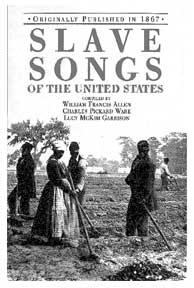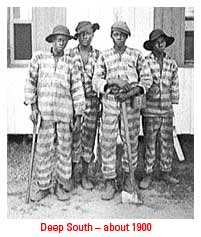Slaves attempted to preserve the culture that they had brought with them from Africa. A Southern woman recalled: “During my childhood my observations were centered upon a few very old Negroes who came directly from Africa, and upon many others whose parents were African born, and I early came to the conclusion, based upon Negro authority, that the greater part of the music, their methods, their scale, their type of thought, their dancing, their patting of feet, their clapping of hands, their grimaces and pantomime, and their gross superstitions came straight from Africa.”
Cato Salve Rebellion Excerpt (from Dance in Film) by Amie Ferrante

“When Africans were brought here, at first they were allowed to keep their drums and use them. After the Cato salve rebellion when slaves “called” to other slaves to join them along the Atlantic coast, drums were confiscated as the slave owners were afraid that the slaves would use the technique of “talking” drums again to organize another revolt. Once the drums were taken away, they turned to stamping out the ancient tribal rhythms in the dirt, so as not to lose this important part of their culture and retain what little original identity they had left.
As the same time, the United States was also importing indentured servants from Ireland and Scotland. These indentured servants brought with them the “hard” shoe dancing from their native lands. Now, it isn’t quite clear how the two forms of dance met and blended, specifically, but, it is clear that at some point they did, and the result was tap dance. When tap dance first emerged is questionable. Some thing it emerged as late as the 1890s, others as early as the 1830’s. Unfortunately, there is no filmed documentation of it’s emergence, and as it wasn’t necessarily an upper class dance form.”
Slaves would often sing while at work. In his autobiography, Frederick Douglass recorded how slaves “would make the dense old woods, for miles around, reverberate with their wild songs, revealing at once the highest joy and the deepest sadness.” The songs told of the slave’s loves, work and floggings and served as rhythmic accompaniment to labor.
Prison Holler

The Lomaxes and other collectors of their time and even much later found some of the most powerful vernacular music of the American South in the region’s oppressive and violent prison system. The songs they found there, John and Alan Lomax wrote, “or songs like them were formerly sung all over the South. With the coming of the machines, however, the work gangs were broken up. The songs then followed group labor into its last retreat, the road gang and the penitentiary’” Bruce Jackson, who recorded in Southern prisons in the 1970s, comments: “Southern agricultural penitentiaries were in many respects replicas of nineteenth-century plantations, where groups of slaves did arduous work by hand, supervised by white men with guns and constant threat of awful physical punishment. It is hardly surprising that the music of plantation culture – the work songs – went to the prisons as well.” These tie-tamping and wood-cutting chants, field hollers, and the occasional blues, recorded by Alan Lomax on Magnacord paper tapes at Mississippi’s notorious Parchman Farm state prison in 1947 and on February 9, 1948, became the basis for the Negro Prison Songs.
The Negros “hollered” out their blues in songs such as:
No More, My Lawd
It Makes a Long Time Man Feel Bad
Levee Camp Holler
What Makes a Work Song Leader?
How I Got in the Penitentiary
Prison Blues,
Murder’s Home
My Baby Got to Go
Midnight Special
